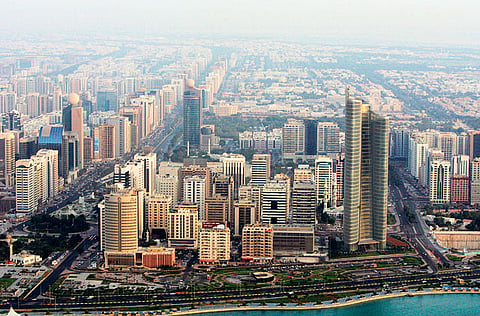Aldar's Alan Patterson talks Estidama
Barring upfront cost implications, developers in Abu Dhabi can derive energy savings and marketing spiel from sustainability

Last September, Abu Dhabi's commitment to green building was codified by the Estidama one Pearl requirement. Any developer who might have turned a blind eye to sustainability in the past would now be forced to confront environmental considerations, albeit with the Pearl Rating System (PRS) serving as a road map to potential solutions.
But, while there may have been hold-outs in the developer community, Aldar, one of Abu Dhabi's most prolific developers, has taken a proactive approach to sustainability. Perhaps, it's not surprising then that Aldar is in step with Abu Dhabi's Estidama initiative, as it counts several government investment funds among its founders.
Sustainability vs cost concerns
In his position as head of planning for Aldar, Alan Patterson is in a unique position to view the design and implementation of sustainable projects from outset to completion. From this bird's-eye perspective, Patterson has identified a pair of recurring dichotomies. "There are two primary tensions in the development world around Estidama and the Pearl Rating System. The first is between principles and implementation, and the second is between cost and sustainability."
In both instances, planning necessarily confronts the difference between idealism and pragmatism and, hopefully, finds some common ground. That common ground is where the Pearl Rating System can operate by offering developers a basket of solutions to choose from, selecting credits that best fit their project.
"The principle of sustainability is generally accepted globally as a ‘good thing' and that we should be doing all we can to support it," Patterson says. "However, following Estidama or any of the sustainability programmes has cost and physical implications which developers need to understand and deal with."
Deterrent from green building
In part, Patterson cites the previously accelerated tempo of development in the UAE as a deterrent to green building. "It is difficult in this region to get developers to think about long-term goals and reduced operating costs," explains Patterson. "In part, this is because of the development culture that arose out of boom. In a way, this is the advantage of the slowdown, as it gives the market time to focus on sustainability strategies."
Now, with the one Pearl requirement, Abu Dhabi's focus on sustainability has been given a vehicle with which to set a base level of energy efficiency, while at the same time promoting sustainable design that goes beyond that minimum.
Aldar, for example, exceeds the one Pearl requirement, Patterson says. "Aldar has made a commitment to achieve at least two Pearls across all of our developments, which for some projects will be a real challenge."
Emily Hust of WSP Environment and Energy, who spoke alongside Patterson at a recent round table talk on sustainability, explains that reports from pilot projects suggest the difference in expenditure between achieving one or two Pearls may be quite reasonable. "It's estimated that the cost premium for achieving one pearl is between 1 and 2 per cent, although one pilot project member recently commented that their experience was closer to 3 per cent premium. What was interesting is that they found that, to go up to two or three Pearls falls in the same 1-3 per cent range for cost premium." In response, Patterson agrees, but puts the remarks in another context: "It's important to point out that, for a developer like Aldar, or Emaar here in Dubai, the scope of the projects is so immense that 2 per cent of the budget is quite a significant amount of money." Patterson's concern is more one of awareness than application, since Aldar, unlike many developers in the region, remains vested in a property's energy usage even after handover.
"Operational cost benefits are important to Aldar as an owner operator," explains Patterson.
"Two Pearls are imminently achievable, especially if the costs are modelled early."
As an example of the importance of early planning, Patterson references district cooling, a technology that, despite greater efficiency can represent higher operating costs; the reasons behind this are instructive: "[District cooling] is more costly at the moment because it is expensive initially to provide the plant and the entire associated infrastructure and if there is not a critical mass of population to be served by this system at the start, then the ‘cost per head' is higher. It will, of course, become more cost-effective as more people use the system." In summation, Patterson recommends that developers solidify their cooling strategy from the outset.
A marketing tool
Beyond Aldar's benefit of energy savings, Patterson sees an advantage for resellers on the horizon as well, as they might use sustainability to differentiate the project in the market. "I think we have to get through this [economic] period and then more and more developers will begin to see a benefit from marketing based on sustainability."
Sign up for the Daily Briefing
Get the latest news and updates straight to your inbox


